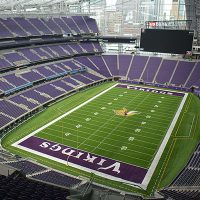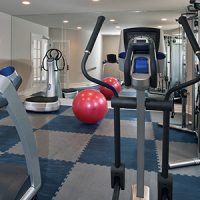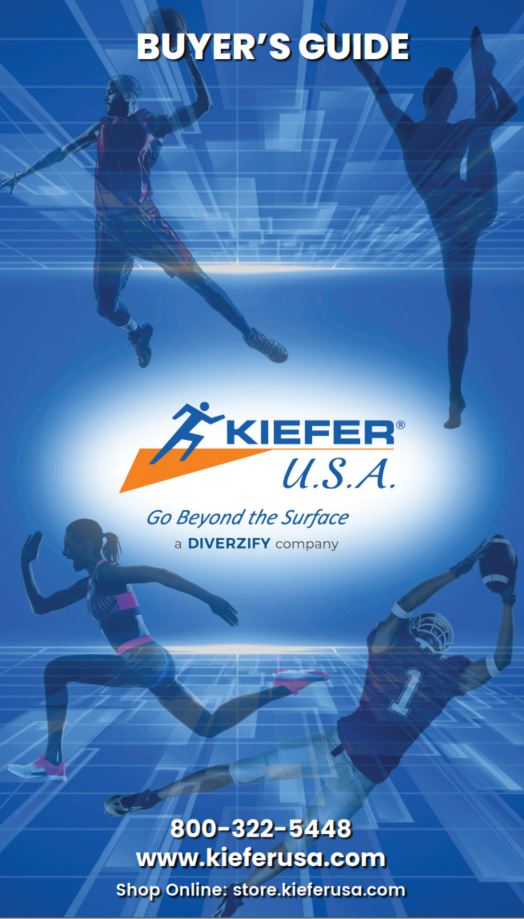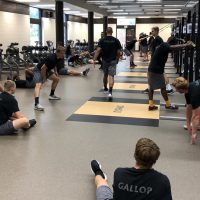
How to Protect Children in Youth Sports from COVID-19
Team sports require interactions between athletes and coaches, close physical proximity between players, and the sharing of sports equipment. Close encounters like these increase the risk of spreading Covid-19. Learn how to protect children in youth sports from the coronavirus disease.
Most parents understand their children’s eagerness to return to youth sports. Athletic games promote exercise and fun. Aside from boosting physical health, seeing friends and teammates on the field is beneficial to kids’ emotional wellbeing. Returning to sports post-Covid-19 will, however, be different.
After months of government issued lockdowns that were intended to curb the spread of the coronavirus disease, children should return to sports gradually. A phased approach to re-enter competitions is necessary, since young athletes must have ample time to get back into peak physical shape.
Health officials have concluded that the coronavirus spreads primarily through human respiratory droplets, such as those emitted through talking, yelling to team members, sneezing or coughing. These miniscule, airborne particles can potentially harbor the coronavirus disease and infect nearby players.
Considering these newly learned facts about coronavirus disease transmission, children can return quicker to sports with limited contact, like tennis, running, swimming or golf. The challenge lies with high-contact sports, such as football and basketball, where team members play with shared balls.
The risks for contracting Covid-19 from other players occurs at the highest rate during competitions between teams from different geographic regions. In such cases, just one or two infected players can expose youth from across the country, who then spread the disease within their communities.
The lowest risk for contracting Covid-19 occurs when children perform skill building activities or condition at home alone or with other family members. Team-based practice is only slightly riskier. Competitions within teams poses an increased risk for coronavirus disease transmission.
While parents can encourage their children to avoid huddling during practices, coaches should take steps to evaluate the risk of transmission of each individual sport. Close-contact sports, like wrestling, should be modified, at least until a vaccine or cure for Covid-19 becomes available.
1. Practice Social Distancing
Social distance between players is crucial to slowing the spread of the coronavirus while allowing athletic activities to continue. Rather than competition, players should focus on building individual skill sets. Such efforts help to maintain six feet of distance from others.
Furthermore, youth athletes should limit the time they spend in close contact with other players, which may be accomplished by playing full-contact strictly during game times. The number of competitions may be decreased during the playing season, and coaches can keep players’ groups small.
When team members are on the sidelines, in the dugout or otherwise not actively competing or practicing, social distancing efforts should still be in play. Rather than cluster with other teammates, young athletes should focus on individual skill building or cardiovascular conditioning.
Maintaining adequate social distance is more readily enforced among older youth who are able to follow direction. Younger athletes require parental or caregiver supervision when they are not playing on the field or court. Children might sit with a parent or caregiver rather than in the sidelines or dugout.
Discourage high fives, fist bumps, handshakes and hugs between players. Ask young players to wait in cars with guardians until just prior to practice, warmups or games. Carpools should be limited; instead, ask players to ride to games with members of the same household.
2. Disinfect Equipment
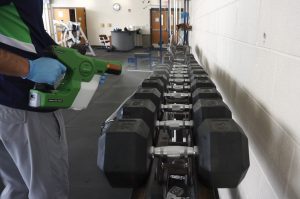 Handling sports equipment that might be contaminated with the coronavirus and then touching one’s mouth, nose or eyes can introduce the virus into one’s respiratory system. Cleaning and disinfecting shared equipment often or minimizing shared use helps to curb the spread of Covid-19.
Handling sports equipment that might be contaminated with the coronavirus and then touching one’s mouth, nose or eyes can introduce the virus into one’s respiratory system. Cleaning and disinfecting shared equipment often or minimizing shared use helps to curb the spread of Covid-19.
High-touch objects should undergo cleaning and disinfection at least once daily. Shared equipment, such as balls, bats and mats, should be disinfected between uses. Always be careful to store disinfectant and cleaning products safely and away from young children.
3. Practice Hand Hygiene
Encourage children to wash their hands with soap and water for at least 20 seconds. After sneezing into a tissue or coughing, hand washing is required. Soap effectively disables the coronavirus. Promote frequent hand washing by providing soap, water, paper towels and no-touch trash cans.
If soap and water or hand washing facilities are unavailable, hand sanitizer that contains at least 60 percent alcohol should be provided. Ensure that young children are supervised when using hand sanitizer. Coaches, older players and staff can safely use alcohol-based hand sanitizer.
4. Wear Masks
Cloth face coverings are intended to protect others from possible coronavirus transmission—rather than the individual wearer. Face masks are available as disposable or reusable varieties and those that feature sports themes with team logos. Masks are also manufactured in child sizes.
Guidelines for wearing face masks have been established. Remind young athletes to avoid touching the face mask. The wearer should properly remove the face mask to avoid possible infection. Children who have trouble breathing or are under two years of age should not wear a face covering.
Until a vaccine or cure is available, coaches and parents are urged to take extra precautions to protect young athletes from exposure to Covid-19. While these are uncertain times, one factor coaches can depend upon is the reliability of Kiefer USA sports flooring products.
Kiefer USA Sport Flooring
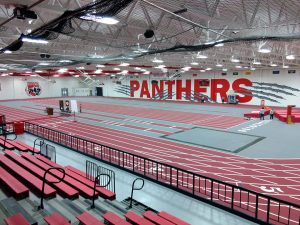 Whether you are in charge of an ice arena, dance studio, indoor court or fieldhouse, Kiefer USA has flooring options to meet your needs. Our flooring choices for youth sports are endless and include artificial turf fields, track and field surfaces, locker room flooring and weight room flooring.
Whether you are in charge of an ice arena, dance studio, indoor court or fieldhouse, Kiefer USA has flooring options to meet your needs. Our flooring choices for youth sports are endless and include artificial turf fields, track and field surfaces, locker room flooring and weight room flooring.
Facility managers have a wide range of choices when it comes to gym flooring materials. Kiefer USA’s versatile flooring material options include rubber, recycled rubber, synthetic turf and wood surfaces. Our comprehensive services include high-quality gym floor surface design and dependable installation.
When you are in the market for new sports flooring that will boost your players’ safety, turn to a company that countless schools and universities trust, Kiefer USA. Our friendly team of representatives are standing by to take your gym floor to the next level. Contact us for a proposal.


